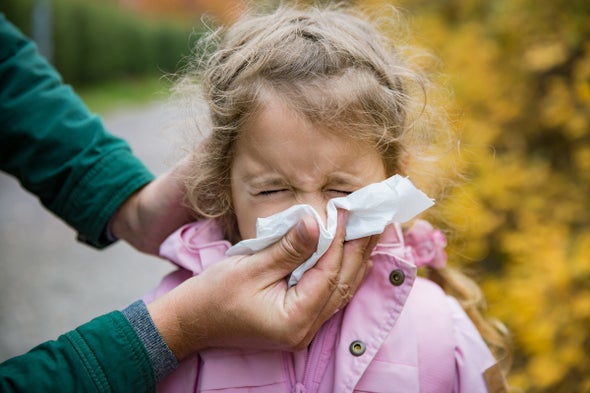Probiotics are live bacteria and yeasts that can live in your body and help to keep you healthy. These healthful bacteria make vitamins, help to digest food, regulate inflammation, and help to limit the number of disease-causing microbes living in your body. Probiotics are found in live-culture fermented foods such as yogurt, kefir (a probiotic milk drink), buttermilk, kombucha (fermented tea), tempeh, miso and natto (fermented soybean products), kimchi, sauerkraut, some pickles, and some fermented cheeses. They are also found in over-the-counter pills that claim to contain live bacteria that will improve your health. However, many scientists have concerns about taking over-the-counter probiotic pills because:
• the healthful bacteria can mutate into bacteria that have harmful properties, and
• the bacteria in pills usually disappear from your intestines soon after you stop taking the pills.
You have more than 100 trillion bacteria living in your intestines. They can be:
• harmful bacteria that are not happy to eat the same foods that you eat, so they try to invade your intestinal cells and bloodstream which can make you sick, or
• healthful bacteria that do not try to invade the cells lining your intestines and eat the same foods that you eat. The healthful bacteria can help to prevent constipation, diarrhea, and irritable bowel syndrome, can lower high blood sugar, cholesterol and blood pressure and possibly even help to prevent and treat diabetes, arteriosclerosis and certain cancers. These “good” bacteria help to protect you from the “bad” bacteria by causing your intestinal cells to produce a layer of mucous that coats the cells lining your intestines, to help prevent the harmful bacteria from invading your intestinal cells and passing into your bloodstream.
Bacterial DNA Can Change in Your Body
Researchers at Washington University School of Medicine in St. Louis gave a large number of mice a probiotic strain of bacteria called “Escherichia coli Nissle 1917” that is sold over-the-counter to treat diarrhea and promote health (Cell Host and Microbe, March 26, 2019). This strain of bacteria was isolated more than one hundred years ago from the stool of a World War I soldier who was one of the few soldiers not sickened during an epidemic of severe diarrheal disease that killed many of the other soldiers.
After just a few weeks, the healthful “E. coli Nissle 1917” bacteria in some of the mice changed their DNA so that instead of making protective mucus to coat the intestines, the bacteria were able to eat through the protective coating on the intestines and then invade intestinal cells, the way the harmful bacteria do. This is what appears to happen when humans develop irritable bowel syndrome.
Interestingly, the change of healthful bacteria to harmful bacteria was influenced by what the mice ate. First, researchers gave groups of mice the “E. coli Nissle 1917” probiotic, and then put them on different diets:
• a regular mouse diet,
• high-fiber pellets that otherwise contained the same foods as the regular mouse diet,
• high-fat, high-sugar, low-fiber pellets (to mimic humans’ typical Western diet), and
• high-fat, high-sugar pellets plus fiber.
After five weeks, researchers checked the DNA of the mice’s intestinal bacteria and found no change in the DNA of the “E. Coli Nissle 1917” bacteria in the mice given a healthful high-fiber diet, but a significant change in the DNA of the bacteria of the mice on the high-sugar, high-fat, low-fiber diet. The high-sugar, high-fat diet was associated with an intestinal change from the healthful probiotic bacteria into harmful bacteria.
• On the high-fiber healthful diet, the probiotic bacteria retained their healthful function.
• On the high-sugar diet, the probiotic bacteria adjusted to feed on the different sugars.
• The high-sugar diet converted the healthful bacteria that originally did not enter the intestinal cells and produced mucous to protect the cells lining the intestines into harmful bacteria that entered and ate the cells lining the intestines.
• When exposed to antibiotics, the probiotic bacteria rapidly developed a resistance to the antibiotics.
Should You Take Probiotics?
A review of 45 scientifically-controlled studies published over the last 27 years (European Journal of Clinical Nutrition, March 26, 2018) shows that in healthy people, the use of probiotic supplements can:
• lead to an increase in these healthful bacteria growing in your colon
• reduce belly discomfort caused by irregular bowel movements and constipation
• improve some immune system responses, stool consistency, bowel movements, and the concentration of healthful bacteria in the colon and vagina
However, these benefits are only temporary as the bacteria in the probiotics stop growing in the colon or vagina soon after a person stops taking the probiotic product. Permanent changes to a more healthful colony of gut bacteria appear to occur only when people make permanent changes to their diets. The probiotic supplements studied in this review included live healthful bacteria packaged in capsules, powders and liquids or those found in live-culture fermented foods such as yogurt or kefir.
Probiotics May Help to Prevent Overgrowth of Harmful Bacteria When You Take Antibiotics
Antibiotics prescribed by your doctor can knock off your good bacteria as well as the bad ones. A review of 39 studies shows that taking probiotics (Saccharomyces, Lactobacilli, Bifidobacteria, and Streptococci) at the same time you take antibiotics can reduce the incidence of diarrhea and super-infections with a harmful bacteria called Clostridia difficile (JAMA, 2018;320(5):499-500).
However, taking probiotic bacteria after you take antibiotics to treat an infection can prevent other healthful bacteria from regrowing in your intestines, to significantly increase your chances of developing allergies and also your increase risk for inflammation that is caused by harmful colon bacteria that try to invade your colon cells (Cell, 2018 Sep 6;174(6):1388-1405.e21). Those who did not take probiotics after taking antibiotics had their healthful intestinal bacteria return to normal much more quickly. The message from this study is that after taking antibiotics that have destroyed your normal bacteria in your intestines, taking probiotics may prevent your usual intestinal bacteria from returning to normal.
Probiotics are Worthless with an Unhealthful Lifestyle
The study from Washington University suggests how quickly an unhealthful diet may cause changes in your gut bacteria. Since healthful bacteria in your colon eat the same food that you do, the best way to grow healthful bacteria is to eat a diet with lots of the foods that encourage the growth of healthful bacteria. Soluble fiber in plants now appears to be the most effective way to grow healthful bacteria in your colon, prevent disease and prolong your life. See The More Vegetables, The Better. The number of harmful colon bacteria increases with certain harmful lifestyle factors such as:
• not eating lots of vegetables and fruits
• eating a lot of pro-inflammatory foods (such as meats, foods with added sugars, sugared drinks and other refined carbohydrates)
• drinking alcohol
• smoking
• not exercising
• being overweight, particularly storing fat in your liver
My Recommendations
Since we have no way to know what is actually in probiotic capsules, drinks or other probiotic products, I recommend that you concentrate on the foods that are known to help you grow a colony of healthful colon bacteria — fruits, vegetables, whole grains, beans, nuts and other seeds — and work to change any of the harmful lifestyle factors listed above that apply to you. You may benefit from taking a probiotic such as live-culture yogurt any time you need to take a prescription for antibiotics to treat an infection.





